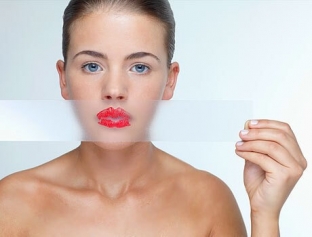It's no secret that many cosmetic procedures are accompanied by side effects - such as redness and swelling of the skin, and other troubles. Their intensity varies depending on the intensity of the procedure and the individual properties of the patient's skin. From a common sense point of view, you should give your skin a break after an expensive procedure and allow it to recover calmly, without applying anything to the face other than supportive home care selected by the doctor. However, patients do not want to leave the clinic with a face that does not look perfect, especially since going to the beautician often becomes a lunch break procedure, and the woman returns from the clinic to the office for routine business and meetings. What correct make-up can be allowed for the patient so that she is satisfied and at the same time does not harm the skin condition, did not nullify the results of the procedure – dealing with estet-portal.com.
Which cosmetics will provide the right make-up and will not harm
Until recently, it was believed that after a facial treatment, if a patient absolutely wanted to apply make-up, only dry mineral powder was allowed. This product is completely inert to the skin and does not react, does not increase inflammation after the procedure and allows the skin to breathe. However, patients are most likely to apply foundation, as any liquid product gives the face more even appeal than dry. In this case, when a wound surface remains on the skin immediately after the procedure, it is necessary to recommend products based on direct emulsion – drops of oil in water, cream-gel types of cosmetics, since the reverse emulsion (“water in oil”), like any fatty creams, will create a moisture-proof layer on damaged skin and impair hydration processes.
In the future, when the process of epithelialization and restoration of damaged skin is already underway, it will be possible to use any means.
To determine whether the patient's foundation can be applied right in the office, place a drop of cosmetics in water. The direct emulsion will dissolve in it, the reverse – will remain stable.
The final touch to the right make-up can be done by lightly emphasizing the eyebrows with a fixative gel, using mascara and tinting the lips. It is better not to use blush, because they almost always contain organic pigments, which can cause deterioration of the skin after the procedure.
ABC of the skin for a cosmetologist (Part 1): the structure of the epidermis
When even the right make-up is better not to use
Even light mineral makeup is undesirable after cosmetic cleansing if the patient is prone to acne. In this case, cosmetics can provoke a long and difficult healing of the skin.
After botulinum toxin therapy, biorevitalization and contouring, if necessary, apply a pharmacy corrector with an antiseptic effect – and nothing more.

It is strictly forbidden to apply makeup after thread lifting, after removal of some neoplasms with a diameter more than 5 mm, after medium peels. After hardware procedures, which are accompanied by swelling and redness of the skin – such as vascular laser, laser resurfacing, dermaroller – applying cosmetics to the skin of the face is also not welcome. But after fractional thermolysis, radio frequency or CO2 laser exposure – applying light correct makeup on the face can be allowed (of course, this depends on the depth and delicacy of the procedural impact and the individual properties of the patient's skin).
The patient should be explained that the first the processes of skin epithelialization after an invasive procedure start after about 6 hours, and after this period the risk of infection in the wound surface will significantly decrease, although it will not disappear completely. It is strictly forbidden to use at this time cosmetics that are applied to the face with fingers from the – only absolutely clean brushes are allowed.
It will be safer to use a special dermatological camouflage (for example, an intensive corrective foundation and fixing powder) if you need makeup. Typically, such camouflage cosmetics are prescribed for patients with congenital pigmentation disorders (vitiligo), hemangiomas, rosacea, but it can also be recommended for patients after medium and deep chemical peels, after dermabrasion, with persistent facial erythema after the procedure.









Add a comment